Wetland development
3 min read
See how we transformed low-productivity farmland into terraced wetland ponds that improve water quality, support native biodiversity, and add to the land’s natural beauty. Careful design and ecological planting turned a gully into a high-value wetland that benefits both the environment and the wider farm system – offering practical learnings you can apply to your own wetland project.
This site originally featured a 120-metre-long gully with an 8-metre drop in elevation. A tile drain entered at the top and discharged water down its length, with natural seeps adding to the flow along the way.
To reduce nitrogen concentrations from the tile drain and boost the area’s ecological value, the plan was to build five weirs and create shallow ponds behind each weir (less than 300mm of water depth). In the end, four were constructed, creating a wetland around 300 square metres larger than expected.
Now, the tile drain discharge and seepage water is slowed down in each of the four wetlands, allowing for nitrogen removal before flowing into the main waterway. The land surrounding the wetland has also been planted with locally sourced native plants, including plants important to the local Iwi.
The images below show the same area before and after the wetland development, with the changes that are described above clearly labelled.
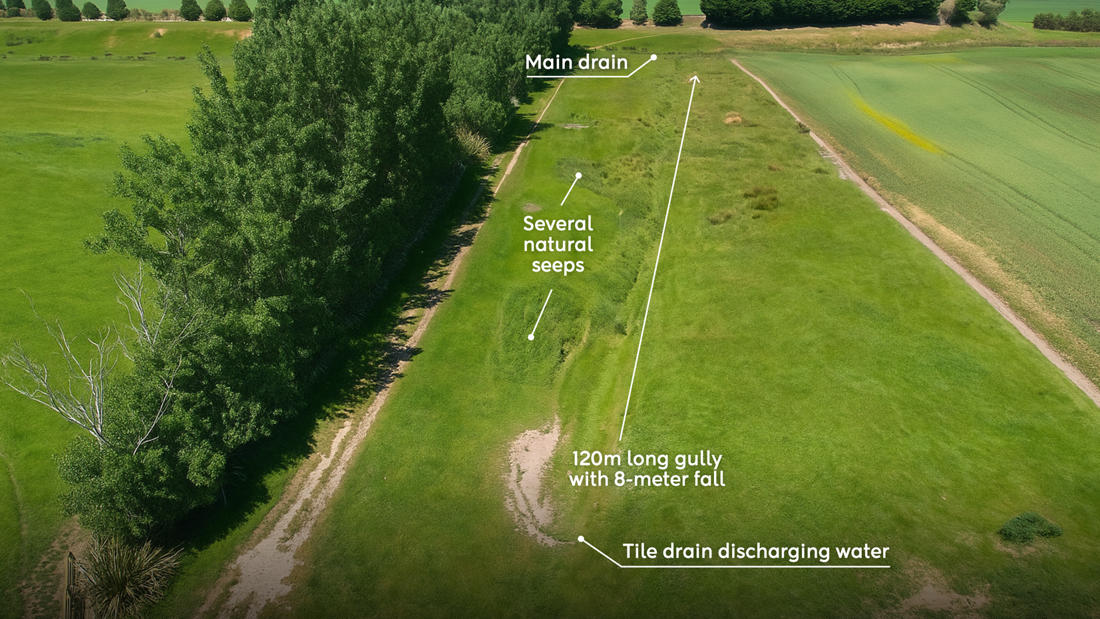
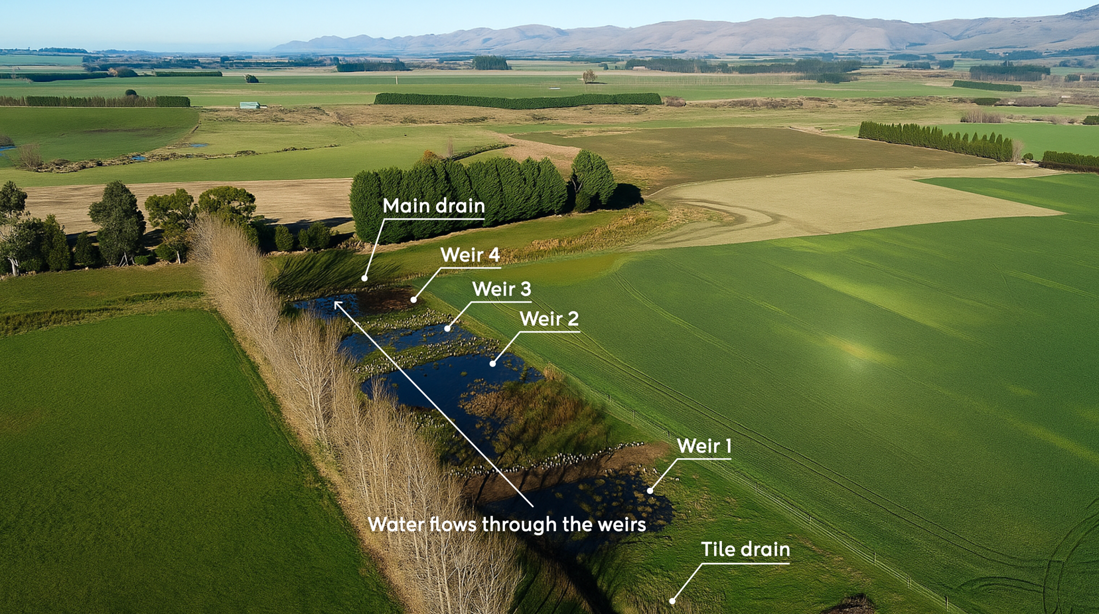
From low-productivity land to high-value wetland: Farmland with numerous seeps was turned into a wetland that reduces nitrogen to a local waterway and improves biodiversity.
Enhancing natural beauty: The wetland adds visual appeal and biodiversity, creating a more vibrant and enjoyable landscape.
Continued learning: The site is being monitored to see how the wetland handles extreme weather, especially heavy rainfall. It’s a work in progress and part of a broader learning journey.
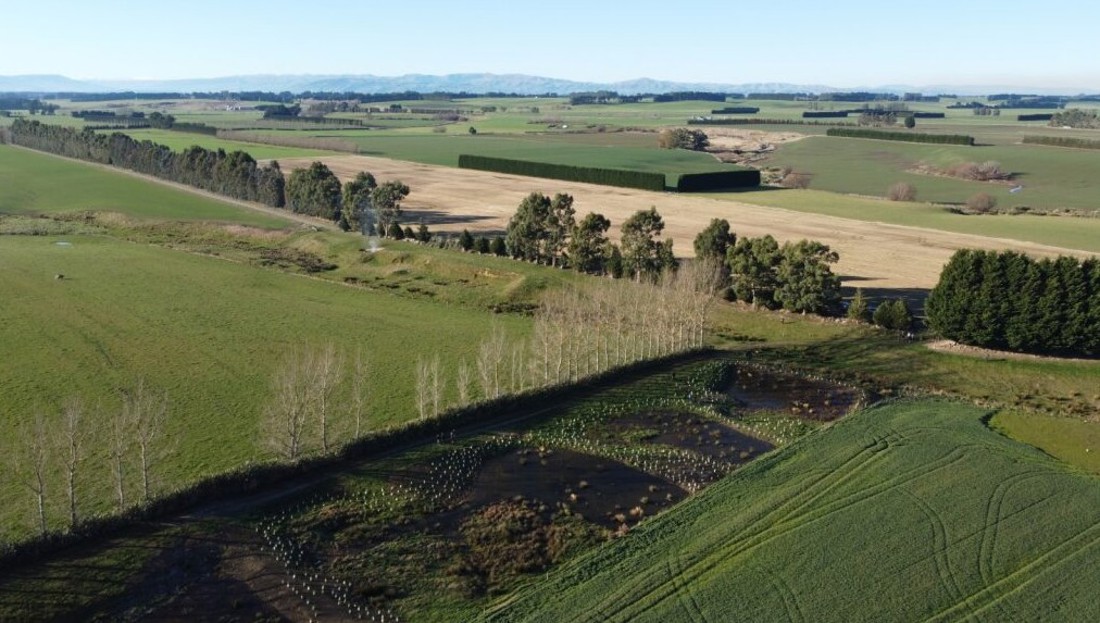
Recent environmental DNA (eDNA) sampling from the main drain at the base of the gully identified over 800 unique species living in and around the water.
Among the native fish detected were upland bully, longfin eel (tuna), and the Gollum Galaxias, a species currently listed as Threatened – Nationally Vulnerable. Monitoring changes in their presence over time will help us understand how the ecosystem is evolving.
While introduced species like goldfinch and other songbirds were picked up, no native birds were detected in this initial round. We’re hopeful that future sampling will confirm native species like Tūī and Fantail are returning. Fantails have been observed above the wetland already and Tūī have been heard in nearby trees.
Rushes and sedges were both detected at lower levels. In future samples we hope to see these increase and to detect flax, cabbage trees, manuka, coprosma and olearia.
The gully contained a lot of naturally regenerating plants, especially cutty grass, red tussock, and rushes. The digger operator worked carefully around them, lifting and replanting them on the wetland floor.
The red tussocks and cutty grass are dying off due to becoming waterlogged. But the rushes have thrived, and seedlings are now popping up across the wetlands from the local seed source.
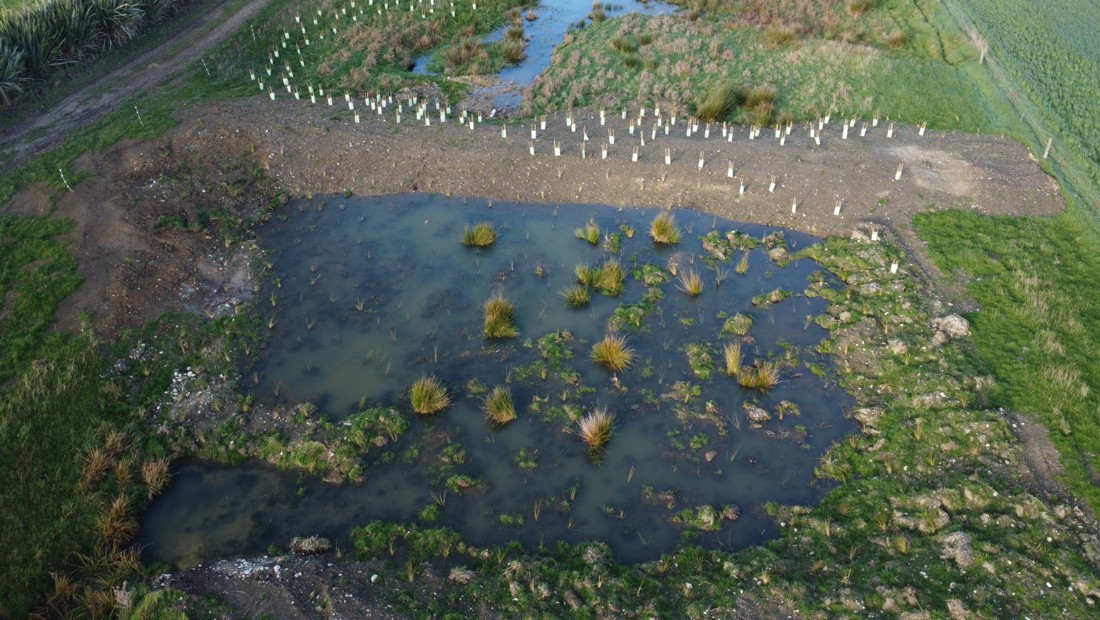
Using what was already growing and letting nature do its part kept planting costs down and supported native regeneration. Working with the land’s natural ecology wherever possible is valuable.
The images below show what the wetlands look like shortly after planting (left) and what they could look like once the plants are well established (right).
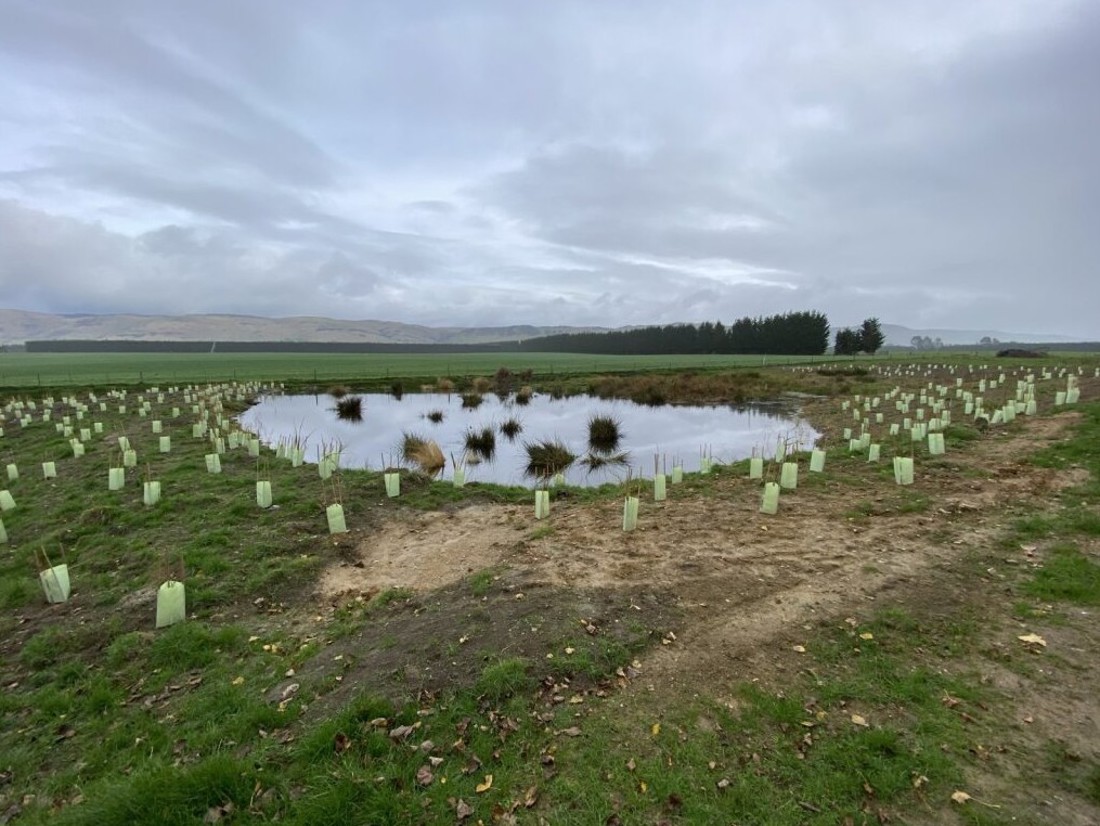
The Orr pond after planting in 2025
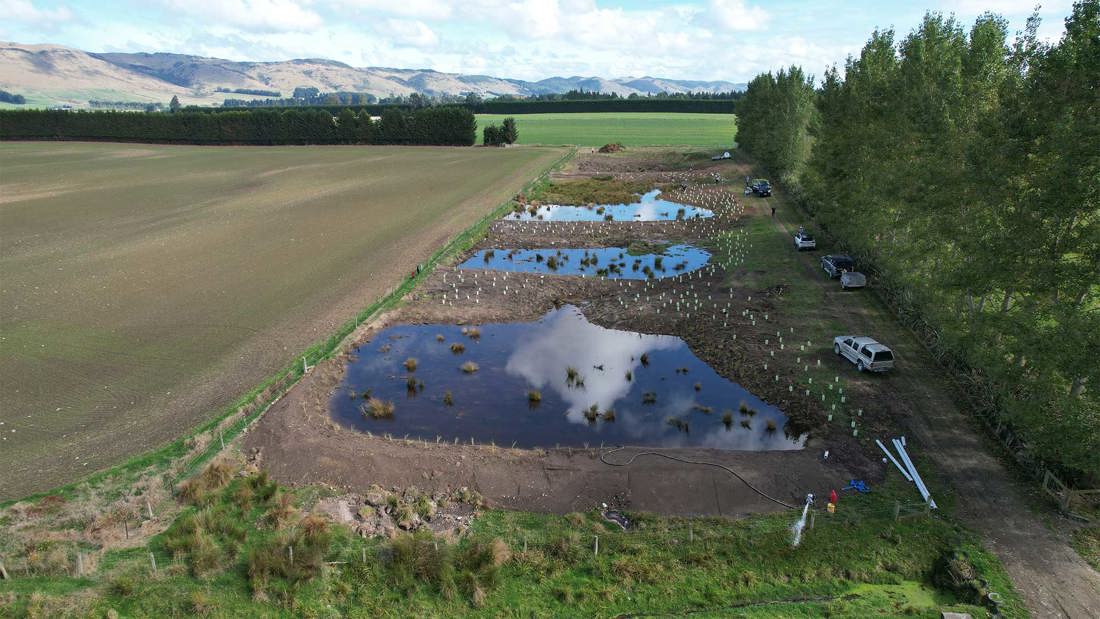
The Orr pond afer planting in 2025
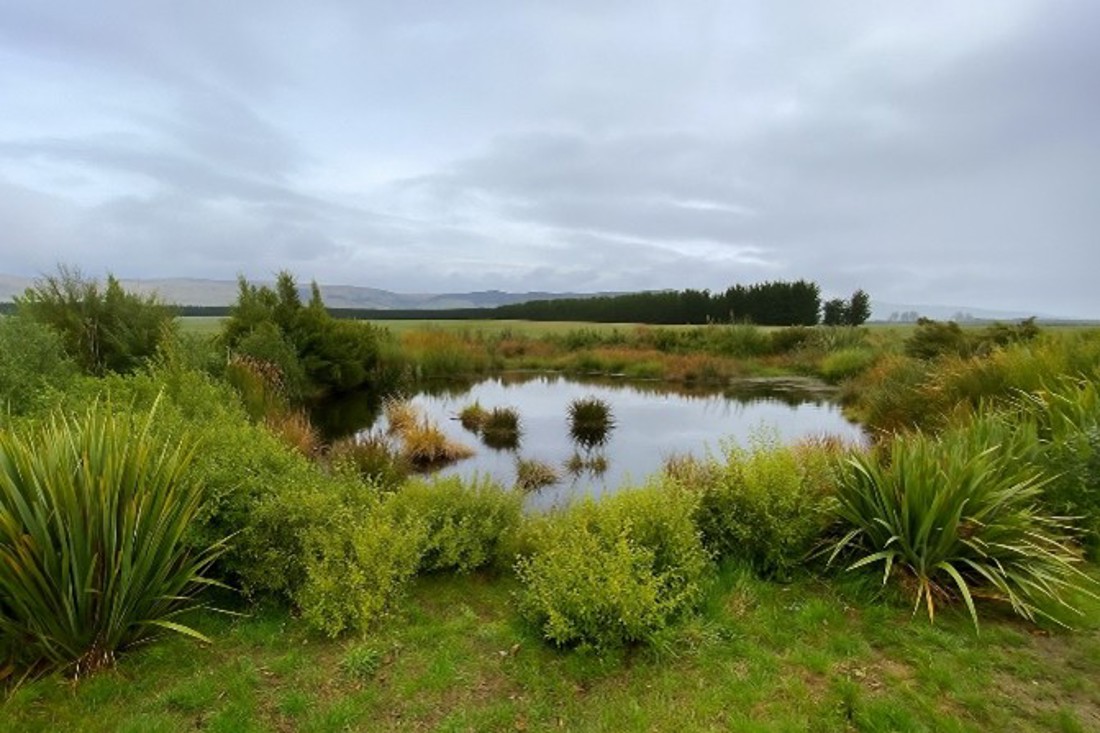
AI impression of planting, 10 years on
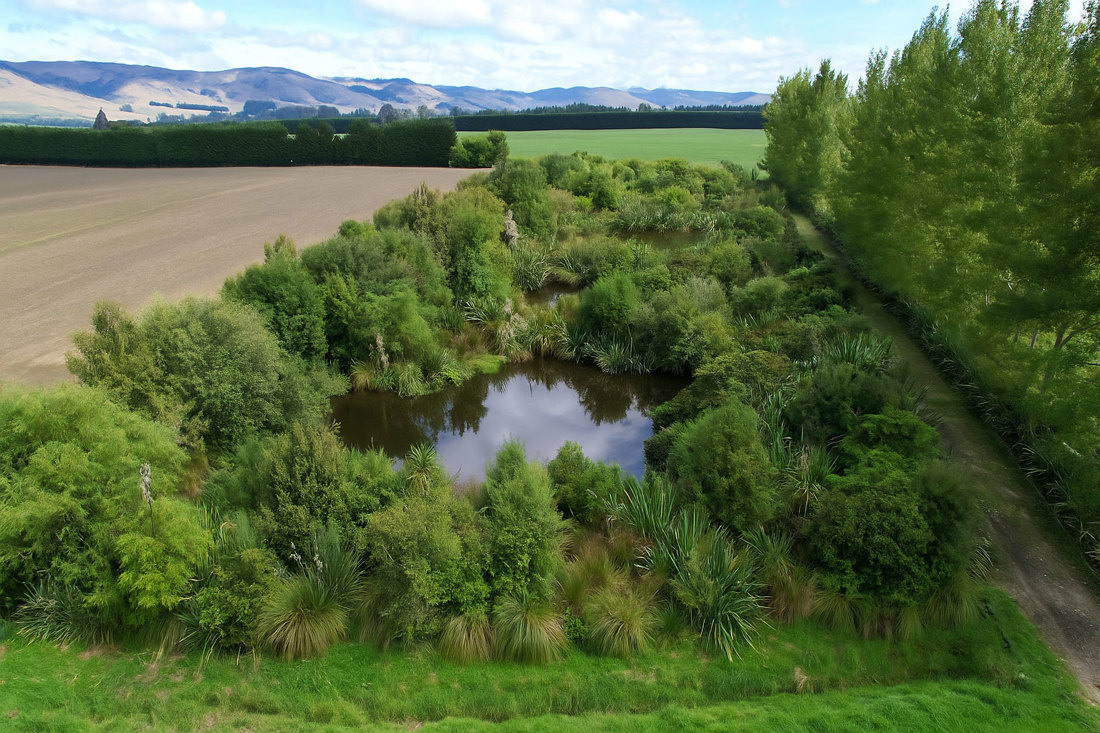
AI impression of planting 10 years on
Catchment groups create powerful change. They are driven by local community members, including increasing numbers of farmers. These groups provide resources and support to get projects off the ground. Find your local group on this Landcare catchment map.
Now’s the perfect time to check in, plan, and set up for a strong season. We’ve pulled together smart tips and tools to help you stay ahead all winter long.
Whether you prefer to read, listen, or download handy guides, we’ve got you covered with trusted tools to support your journey every step of the way.
Put our proven strategies and seasonal tools to work. Boost production, support animal health and watch your profits hum.
Tools that are backed by science, shaped by farmers and made for this season.
That’s Summer Smarts.